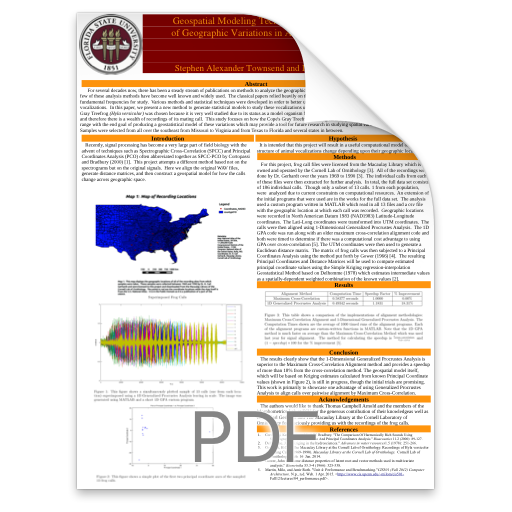
Authors
Title
Geospatial Modeling Techniques for the Analysis of Geographic Variations in Animal Vocalizations
Abstract
For several decades now, there has been a steady stream of publications on methods to analyze the geographic variations in the vocalizations of various animal species. A few of these analysis methods have become well known and widely used. The classical papers relied heavily on the use of spectrograms to decompose vocalizations into their fundamental frequencies for study. Various methods and statistical techniques were developed in order to better utilize these spectrograms to understand the workings of animal vocalizations. In this paper, we present a new method to generate statistical models to study these vocalizations using the mating calls of the Cope's Gray Treefrog. The Cope's Gray Treefrog (Hyla versicolor) was chosen because it is very well studied due to its status as a model organism for studies on polyploidic speciation and mate discrimination and therefore there is a wealth of recordings of its mating call. This study focuses on how the Cope's Gray Treefrog's mating calls vary over the majority of their geographic range with the end goal of producing a geostatistical model of these variations which may provide a tool for future research in studying spatial variations in animal vocalization. Samples were selected from all over the southeast from Missouri to Virginia and from Texas to Florida and several states in between.

